Are you wondering what is print on demand and how to run your print-on-demand business? You will learn everything you need to know to begin earning money online using print-on-demand from this post.
Table of Contents
In the blog, we’ll surf POD, including what and how it works, and the benefits it can offer businesses of all sizes. We’ll also explore the different types of POD printing available.
Before you get started, let’s show you the global market size of print-on-demand.
According to Market.us, the Print on Demand (POD) Market is expected to grow from $6.5 billion in 2024 to $59.3 billion by 2033, with a yearly growth rate of 27.8%.
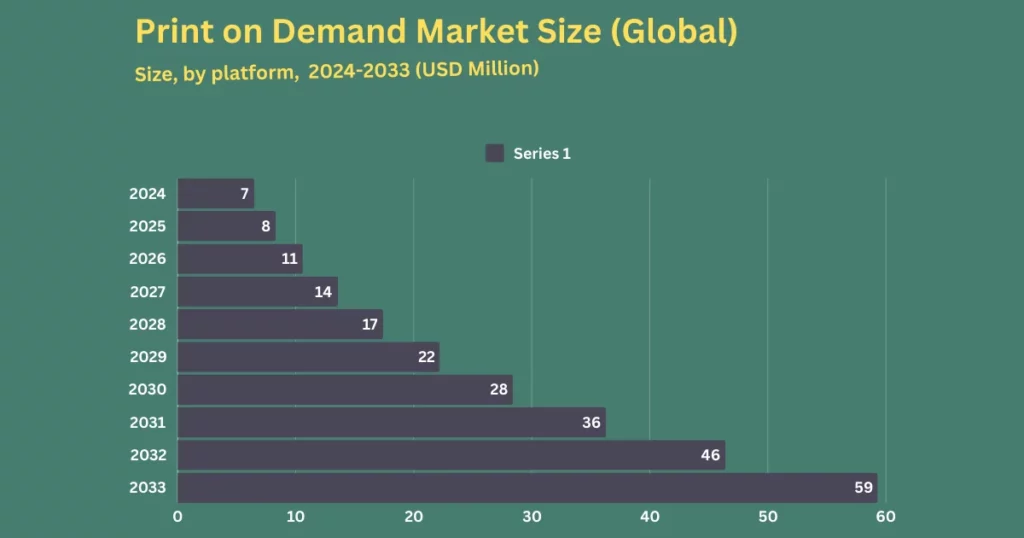
In 2023:
- Software platforms ruled with 72% due to easy use.
- Apparel was top in products with 37.5%, thanks to customization.
- North America led the market with 40%, worth $2.04B, due to strong e-commerce.
- Asia Pacific grew the fastest at 27.9%.
The market is growing because more people want personalized products and online shopping is becoming more popular. It’s especially popular with small businesses and individuals who want to sell unique items without keeping stock.
However, it’s important to understand the good and bad sides of having someone else print your custom designs.
Let’s explain what is print on demand, the pros and cons, and more.
What Is Print on Demand?

What is Print on Demand(POD)? Print-on-demand is a business where clothes, accessories, or home decor items are made only after someone orders them. When a customer buys products, a service handles the printing, packing, and shipping. This way, sellers don’t have to keep products in stock or manage storage.
It’s easy to start, has low costs, and gives newcomers a fair chance, even attracting large companies to offer PoD products.
PoD lets creators sell branded items without managing inventory or supply chains, making it perfect for small online businesses.
The History of Print-on-demand
Since its introduction in 1993, digital printing has grown to a $187.7 billion business by 2018, according to Printsome. As printing went digital, traditional commercial printing became less important, but new business models emerged.
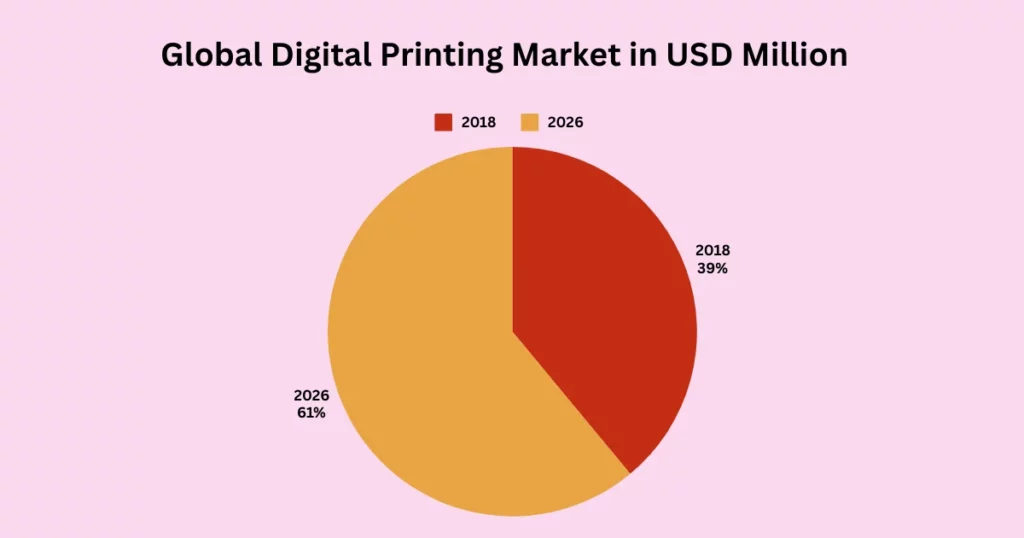
After growing quickly in the ‘90s and 2000s, the digital printing market now faces challenges.
| Category | Details |
| Growth and Drivers | – Grew rapidly in the ’90s and 2000s. – Driven by better technology, growing packaging/textile industries, and lower print costs for small jobs. |
| Biggest Markets | – North America: Largest and stable market. – Asia-Pacific (APAC): Fastest-growing due to technology upgrades and large textile hubs. |
| Challenges | – High initial costs slow adoption |
| Trends | – E-books and digital ads reduced demand for traditional printing. – Smartphone use and digital displays boost growth in specific areas. |
| Milestones | – 1977: Indigo printer launched. – 1988: Desktop publishing emerged. – 1993: Affordable consumer inkjet printers released. – 2001: HP acquired Indigo. – 2016: The digital printing market is 18%. |
| Market Value | – 2018: $21.4 billion. – 2026: Projected $33.5 billion. |
Consumers’ Top Focus Is On-Demand
- 42% of consumers are interested in customized products from well-known brands.
- 70% of retailers are trying to personalize in-store shopping for consumers.
- 22% of customers are willing to share their personal data for more personalized products or services.
- 55% of Gen Z wants to create products no one has ever seen before.
What are the Print-On-Demand Requirements?
You must upload two PDF files in order to submit a POD (Print-on-Demand) book:
- Cover: Includes the back cover, spine, front cover, and bleed area.
- Interior: The main content of the book.
Key Points to Check:
| Element | Details |
| Manuscript | Upload a properly formatted and edited document, usually in PDF. |
| Book Cover | Submit a high-quality PDF or JPEG of your cover that meets size and design rules. |
| Page Setup | Ensure proper margins, fonts, spacing, and page size. |
| Bleed & Trim | – Bleed: Extra space for designs that extend to the page edges. – Trim: Final size of the book after cutting. |
| Binding | Choose how the pages are joined (e.g., hardcover, softcover). |
| Spine | The narrow edge shows the book title, author, etc. Spine size depends on page count and paper type. |
| ISBN | A unique book ID; some platforms provide one if you don’t have it. |
| Metadata | Info like title, author, keywords, and description for online listings. |
| Book Description | Write a brief, appealing summary of your book. |
How Does Print-on-Demand Work?
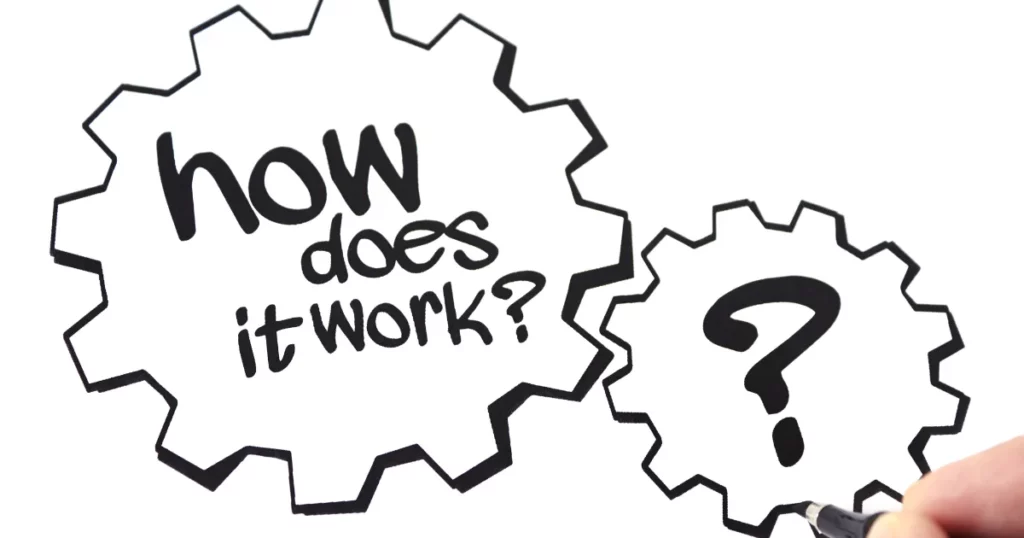
Let’s now shift our focus to the printing process. you will have a huge doubt about the process and probably think it is complicated. Well, it’s not. The method that enables the swift production of personalized items is simple and as follows:
- When a customer places an order, the service gets all the order details including the chosen design and the type of product.
- Utilizing digital printing technology the selected design is then replicated onto the product of choice, be it a t-shirt, mug, or phone case.
- This printing process is all about making sure the design is accurately and beautifully transferred onto the product.
- Resulting in a final product of excellent quality. Once the printing is done, the product goes through a thorough quality check.
- It then ensures that it lives up to the customer’s expectations. This entails inspecting for any flaws or printing errors and ensuring the product itself is in top-notch condition.
- Once the product passes this quality check, it’s carefully packaged and readied for shipping. The service handles all aspects of shipping and fulfillment.
- Taking care of packaging the product and sending it directly to the customer’s provided address.
This helps in a flawless transaction for both the seller and the customer. thus, the printing process is both efficient and dependable. Ensuring fast turnaround times and producing high-quality results.
Whether you’re a small business owner or a creative individual it doesn’t matter because print-on-demand simplifies the process. It brings your designs to life and creates custom products that will impress your customers.
Pros and Cons of Print-on-Demand
Print-on-demand (POD) is a popular e-commerce business model for people who want to make some extra money or start a full-time business. Before jumping in, it’s important to consider both the benefits and challenges to decide if it’s right for you.
Pros:
- No Upfront Costs: With print-on-demand, you don’t need to spend money on inventory or expensive printing equipment to get started.
- Easy to Start: You can add your designs to products and start selling in just a few minutes.
- Be Creative: Print-on-demand lets you focus on your designs without worrying about fulfillment and shipping.
- Try Different Ideas: If a design doesn’t sell well, you can easily try new ideas to see what your customers like.
Cons:
- Higher Cost per Item: The cost per item is higher compared to buying in bulk or wholesale, which means lower profit margins. This is because POD companies include printing, packaging, and production staff costs in the item price.
- Longer Delivery Times: Delivery times can be longer because products are made after an order is placed. This means extra time is needed for processing and fulfillment compared to pre-made products.
- Decreased Margins: Naturally, if you purchase in bulk, your costs per item will be lower.
- Less authority over delivery: Shipping charges can be complicated because they can differ depending on the print-on-demand product.
Who Can Take Advantage of a Print On-demand Business?

Print-on-demand (POD) businesses offer numerous advantages to a diverse range of individuals and organizations. Here’s how different groups can benefit from this business model:
Artists and Creators:
- Unlock Creative Potential: Artists and creators can transform their artwork into tangible products like t-shirts, mugs, phone cases, and more without worrying about inventory management or upfront costs.
- Expand Reach: POD platforms provide artists with a global marketplace, allowing them to reach a wider audience. By selling their designs on products, they can monetize their creativity and build a loyal customer base.
- Focus on Design: With production and fulfillment handled by the POD service, artists can concentrate on what they do best—creating unique and captivating designs.
- Example: An illustrator can design a series of animal-themed graphics and have them printed on various merchandise. By promoting these products through social media and their online store, they can generate a steady income stream from their artwork.
Ecommerce Entrepreneurs:
- Low-Risk Startup: E-commerce entrepreneurs can start a POD business with minimal investment. There’s no need to purchase inventory upfront, which reduces financial risk and allows for greater flexibility.
- Test Market Demand: Entrepreneurs can easily test new products and designs without significant financial commitment. If a product doesn’t sell well, it can be discontinued without the loss associated with unsold inventory.
- Scalability: POD businesses are highly scalable. As demand grows, production and shipping are managed by the POD provider. Allowing entrepreneurs to scale their operations without worrying about logistics.
- Example: An e-commerce entrepreneur can launch an online store featuring custom apparel. By using a POD service, they can offer a wide variety of designs and sizes without holding stock. this caters to a broader audience.
Global Brands and Enterprises:
- Brand Expansion: Established brands can use POD to expand their product offerings and reach new markets. Custom merchandise can enhance brand visibility and loyalty.
- Promotional Products: Enterprises can create branded merchandise for marketing campaigns, events, and employee gifts. POD allows for quick production and delivery, making it ideal for limited-time promotions.
- Market Testing: Large brands can test new product ideas and designs in different markets without a major financial outlay. This flexibility enables them to gather consumer feedback and adjust their strategies accordingly.
- Example: A global tech company can create limited-edition merchandise for a product launch event. By using POD, they can ensure high-quality items are available on-demand without the need for large-scale production runs.
What Types of Products to Choose for Print-On-Demand?

Some of the best selling print-on-demand products to start your business with:
1. Male Round Neck Half-Sleeve T-shirts

These classic T-shirts are made from soft, high-quality cotton. They are perfect for casual outings, layering under other clothes, or relaxing at home. Each shirt is checked to ensure it lasts long and keeps its color.
2. Female Round Neck Half-Sleeve T-shirts

Designed for women, these female T-shirts offer a great fit and stylish look. Customers love the soft fabric and neat stitching.
3. Unisex Oversized T-shirts
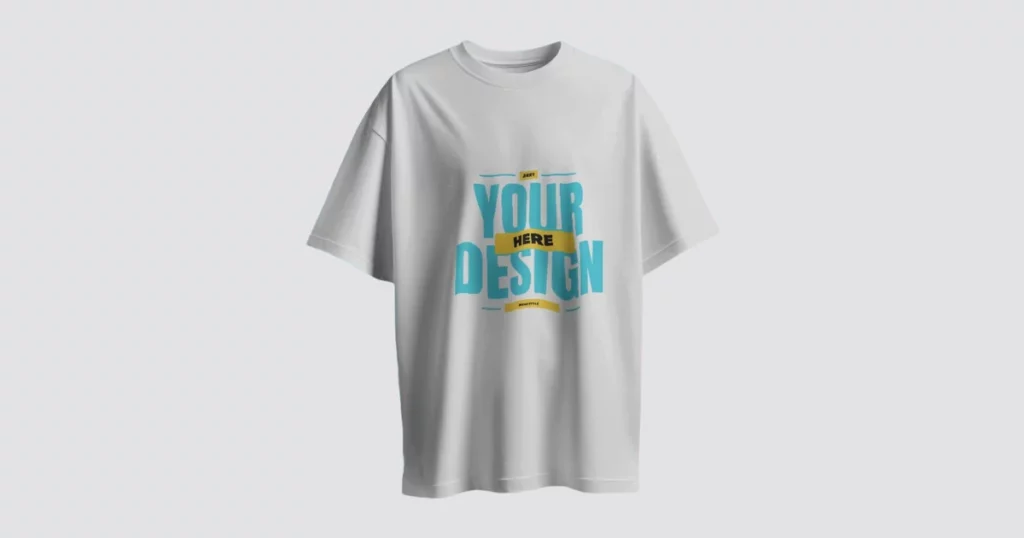
These oversized T-shirts are both relaxed and trendy. Available in plain colors and bold prints, they can be worn tucked into jeans, layered with jackets, or as loungewear. The loose fit gives a modern twist to casual outfits.
4. Female Crop Tops

Stay cool and stylish with Blinkstore’s crop tops. Made from lightweight fabrics, they come in trendy cuts and colors. These tops are designed to flatter different body shapes and offer a chic, youthful look.
5. Unisex Joggers
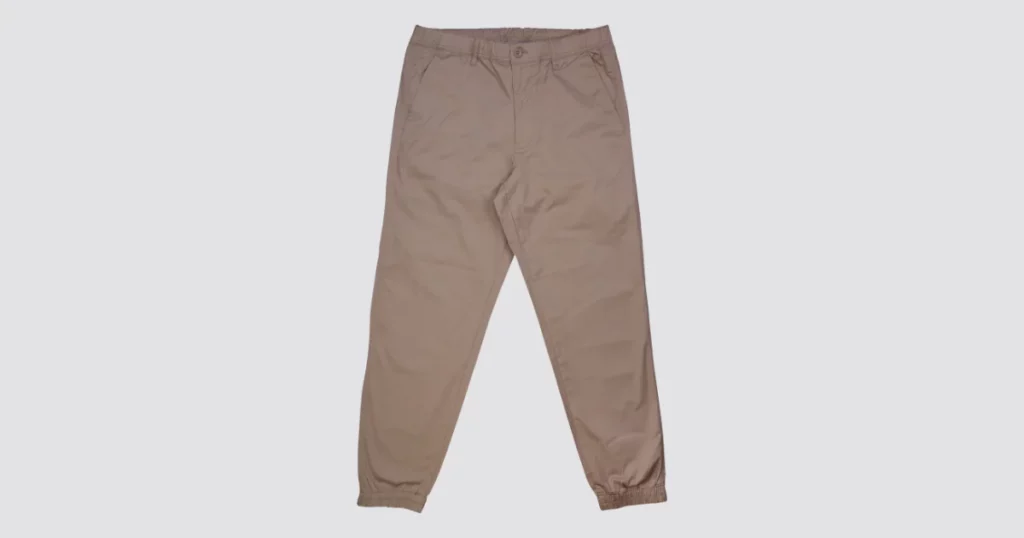
Enjoy comfort and style with Blinkstore’s unisex joggers. They have elastic waistbands and cuffs for a snug fit. These joggers go well with various outfits and are popular for their athleisure appeal.
Common Print on Demand Products
| Category | Examples |
| Clothing | Men’s tops, Women’s tops, Dresses, Leggings, Skirts, Shorts, Hoodies |
| Accessories | Bags, Jewelry, Socks, Hats, Caps, Visors |
| Wall Art | Posters, Canvas prints, Wall tapestries, Wall decals, Framed art |
| Home Items | Pillows, Pillowcases, Mugs, Blankets, Towels |
| Tech Accessories | Smartphone cases, Popsockets |
How to Design Products Without Being a Designer?
Design is very important for making successful print-on-demand products, but you don’t need to be a full-time designer to get great designs. Here’s how you can create or commission your own designs easily.
Preparing Your Design File:
Specify that your design is for printing: This means the design should be saved at 300 dots per inch (dpi). The design’s dimensions should match the printing area of the product.
Print specifications might change depending on the printing technique, so share the print specs with the designer. Your file will usually be a PNG or PSD. If you use a transparent background, the t-shirt color will show through as the background.
Where to Find Design Ideas:
If you’re not a designer, you can still get great designs by outsourcing. Here’s how:
Find designers on platforms like Behance or 99designs. Explain who the design is for and what it’s about. Use your pitch and revisions to clearly communicate your ideas. Show them references or past work you liked. There are many talented designers out there. The key is to clearly communicate your ideas and needs.
Finding Design Inspiration:
To find ideas for your designs, consider where your target audience spends time online:
- Pinterest: Look for popular styles and trends.
- Facebook pages: Check out pages that your audience follows.
- Subreddits: Visit subreddits related to your niche.
How to Choose Your Print-on-Demand Provider?
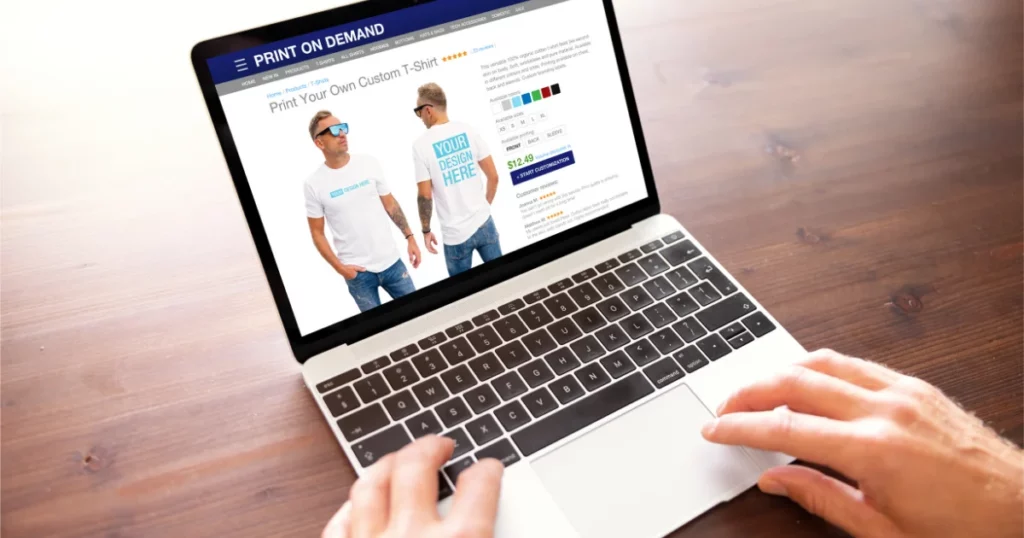
Selecting the right print-on-demand (POD) provider is crucial to the success of your business. Here’s a comprehensive guide to help you make an informed decision:
Fulfillment Methods
Different products require specific printing techniques. For instance:
- Direct-to-Garment (DTG): Ideal for intricate designs on apparel.
- Screen Printing: Perfect for bulk orders and simple designs.
- Sublimation: Ideal for vibrant, all-over prints.
- Embroidery: Adds a premium touch to hats, polos, and more.
Know more about these methods on our blog “Best Guide to Dye Sublimation Printing, Screen Printing, Heat Transfer Printing, & 3 More”.
- Customization Options: Ensure the provider offers the customization options you need, such as embroidery, engraving, or special finishes.
Facility Locations
- Global Reach: Choose a provider with facilities strategically located to minimize shipping times and costs, especially for international customers.
- Shipping Efficiency: Providers with multiple facilities can streamline logistics, resulting in faster delivery and lower shipping fees. Check for warehouses near your target markets.
Fulfillment Times
- Production Speed: Investigate average production times for various products. Quick turnaround enhances customer satisfaction and encourages repeat business.
- Shipping Speed: Check for express shipping options if you plan to offer expedited delivery. Prompt delivery is crucial for maintaining customer loyalty.
- Reliability: Read reviews to assess the provider’s track record in meeting fulfillment deadlines. Consistent delays can damage your reputation.
Product Quality
- Material Standards: Ensure the provider uses high-quality materials that align with your brand’s standards. Ordering samples allows you to assess product quality firsthand.
- Print Quality: Vibrant colors, durability, and precision are essential. Poor print quality can result in negative customer experiences and returns.
- Consistent Quality: Consistency across all orders, regardless of volume, is crucial for maintaining brand reputation and customer satisfaction.
How to Sell with Print-on-Demand?
This opens up a world of opportunities for artists, entrepreneurs, and businesses alike. Once you’ve created your custom products, it’s time to start selling and reaching customers. Here are some tips to help you succeed with Print on Demand:
1. Create a Compelling Brand
Develop a strong brand identity that resonates with your target audience. This includes a catchy name, eye-catching logo, and cohesive design aesthetic. Building a brand that stands out will help attract customers and build trust.
2. Optimize Product Listings
When listing your products, ensure that you give clear and accurate descriptions, high-quality product images, and relevant tags. Use keywords that your target audience is likely to search for to improve your product’s visibility in search results.
3. Use Social Media Marketing
Leverage the power of social media to promote your products. Create engaging content, showcase your designs, and engage with your followers. Consider running targeted ads to reach a wider audience and drive traffic to your online store.
4. Collaborate with Influencers
Partner with influencers or bloggers in your niche. This will help promote your products. Their followers trust their recommendations, so collaborate with them. Influencers will give you a boost which improves your visibility and drives sales.
5. Offer Special Promotions and Discounts
Create a sense of urgency. Encourage customers to buy your product. offer them limited-time promotions, discounts, or free shipping. This can help incentivize customers to buy your products and increase sales.
6. Gather Customer Feedback
Listen to your customers and gather feedback. This improves your products and customer experience. Encourage reviews and testimonials. Use this feedback to make necessary adjustments to your offerings.
7. Stay Engaged with Your Audience
Maintain regular connection and communication with your customers. By email newsletters, social media, and other channels. Keep them updated on new designs, promotions, and any upcoming events. Building a loyal customer base is essential for long-term success.
Remember, success takes time and effort. Stay consistent, be creative, and always strive to exceed customer expectations. With the right ways, you can turn your passion into a thriving business.
What Is the Best Print-on-Demand Company in India?
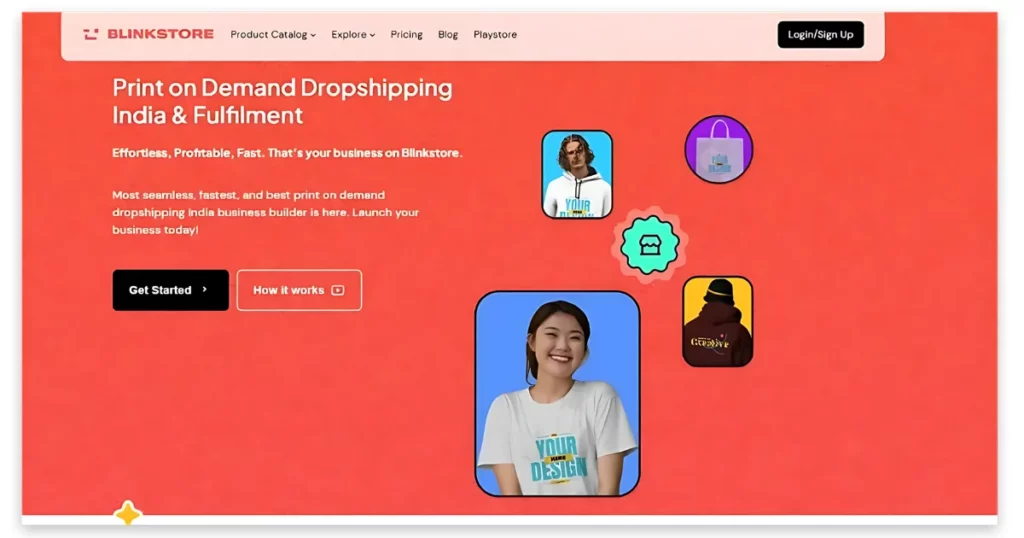
Selecting the best print on demand site is crucial to the success of your business. With the options so wide, it’s important to consider factors such as pricing, product variety, quality, USP of the platform, and customer service.
Blinkstore is a popular print-on-demand platform in India. This platform has a wide range of products to choose from. Increase your efficiency with Blinkstore to have a successful business in India. Blinkstore offers you many features such as:
- Blinkstore is a user-friendly platform, and you can create an online account within 5-10 minutes.
- Blinkstore provides you with everything that a print-on-demand business requires for instance free online store setup, product creation, customization, printing, and order fulfillment.
- Blinkstore offers over 50+ variety of products.
- Blinkstore offers a free inbuilt store, AI mockup generator, and mobile app for mobile users.
Blinkstore print-on-demand India is a perfect option that aligns with your wants and goals. Finding the right platform that meets your requirements is necessary. It is a crucial step towards building a successful business.
Challenges to Consider in Print on demand
While Print-on-demand offers advantages, it’s essential to be aware of the challenges:
- Profit Margins: Per-unit printing costs for POD can be higher than traditional methods. which affects profit margins.
- Quality Control: Creators must rely on the quality control processes of the POD platforms, which can vary in rigor and reliability.
- Customization Limits: Some POD platforms have restrictions on how much you can customize a product.
- Marketing and Distribution: Creators are responsible for marketing and distribution. Which can be challenging without expertise in these areas.
- Platform Fees: Many POD platforms charge fees or commissions on each sale, affecting overall revenue
Tips for Successful POD Publishing
Follow these tips for a successful pod business:
1. Be Unique and Stand Out
In a saturated market, it’s crucial to differentiate yourself from the competition. Create designs that are original, and eye-catching. Speak to your target audience.
Consider niche markets or specific themes to cater to a more specific customer base.
2. Order Samples
Before offering products to customers, order samples to assess print quality, material durability, and overall product satisfaction. This ensures that you’re delivering high-quality products that meet your standards.
3. Focus on Quality
The quality of your products is essential for customer satisfaction and repeat business. Choose a print-on-demand service that offers high-quality printing and durable materials.
Ensure that your designs are clear, crisp, and accurately reproduced on the products.
4. Create Mockups
Utilize mockup generators to create realistic representations of your products showcasing your designs on various merchandise. These mockups can be used for product listings, social media promotion, and marketing materials, enhancing the visual appeal of your offerings.
5. Strategize Shipping
Offer fast and reliable shipping options to meet customer expectations for prompt delivery. Consider factors such as shipping costs, delivery times, and packaging options to optimize the shipping experience for your customers.
6. Build an Online Presence
Establish a strong online presence. Showcase your products and connect with your target audience. Create your website or online store.
So that customers can easily browse and buy your products. Make use of social media platforms to engage with your audience. Share updates, and promote your designs.
7. Market Your Products Effectively
Don’t just rely on the print-on-demand service’s marketplace to generate sales. Install marketing strategies such as email marketing, social media advertising, and influencer collaborations. which will expand your reach and drive traffic to your online store.
8. Listen to Customer Feedback
Pay attention to customer reviews and feedback. Understand their preferences and improve your offerings.
Why Print on Demand is the Future?
Print on Demand is revolutionizing e-commerce in several key ways:
- Customization: It empowers creators to offer unique and personalized products. Catering to niche markets and individual preferences.
- Cost-Effective: POD eliminates the need for bulk production and warehousing. reducing upfront costs and minimizing financial risks.
- Global Reach: Through the reach of online marketplaces and global shipping, creators can tap into a worldwide customer base.
- Environmentally Friendly: The on-demand approach minimizes waste, making it a more sustainable choice.
- Quick to Market: POD enables rapid product launches, allowing entrepreneurs to respond to trends and customer demands swiftly.
- Minimal Maintenance: Creators don’t need to worry about inventory management or fulfillment logistics.
- Copyright and Creative Control: Creators retain full control over their work, including copyright and distribution.
Conclusion
Print on Demand stands out as a beacon of creativity and innovation. It’s a movement towards sustainable, personalized, and cost-effective retail. It’s a movement that lets artists and authors share their vision.
Without the crushing burden of inventory or high upfront costs. There is a huge potential for POD. Its ability to enhance customer service and reduce cost makes it the future of online merchandise.
FAQs on What is Print on Demand
Here are some frequently asked questions about What is Print on Demand.
Is Print on Demand only for creative professionals like artists and designers?
Not at all. Print on Demand is for anyone looking to create custom products. Whether you’re an artist, writer, entrepreneur, or an individual with a unique vision. The possibilities are diverse and open to all.
Are there any upfront costs associated with Print on Demand?
One of the major advantages of Print on Demand is that it reduces upfront costs. You don’t need to invest in bulk production or maintain extensive inventory. Costs are incurred only when you make a sale.
Can I sell my Print on Demand products internationally?
yes. Print on Demand platforms often integrate with global shipping services. which allows you to sell and ship products to customers around the world. It’s an excellent way to tap into international markets.
What if I don’t have professional design skills? Can I still use Print on Demand?
Absolutely. Many Print on Demand platforms offer user-friendly design tools and templates that make it accessible to individuals without professional design skills. It’s all about unleashing your creativity.
How do I handle quality control and assurance with Print on Demand?
Quality control is typically managed by the Print on Demand platform. They follow strict procedures to make sure that the end products match your requirements and maintain top-notch quality. This level of service is all part of the package.
Can you make money with print on demand?
Yes, Individuals and businesses use this model to create and sell customized products without the need for inventory or upfront costs. Success depends on factors like product selection, marketing, and understanding your target audience.
Is print on demand still profitable?
Print on demand can still be profitable, but success depends on various factors. The market’s competitiveness, the uniqueness of your designs, effective marketing strategies, and the quality of products all contribute to profitability. Staying updated on industry trends and adapting your offerings accordingly can help maintain or enhance profitability.
What is the benefit of print on demand?
The benefits of print on demand include: No Inventory Costs: You don’t need to invest in or manage inventory.
1. Low Initial Investment: Minimal upfront costs compared to traditional business models.
2. Customization: Ability to create unique and personalized products.
3. Scalability: Easy to scale your business without dealing with production challenges.
4. Reduced Risk: No excess inventory risk, as products are only produced when ordered.
5. Global Reach: You can reach a wide audience through online platforms without geographical limitations.
Is print-on-demand risky?
No, Print-on-demand (POD) carries minimal risk compared to traditional inventory-based businesses.
Is print-on-demand a good business?
Yes, POD can be a profitable business model. Especially for those with creative designs or niche market ideas.
Can I do print-on-demand for free?
Yes, starting a POD business can be free if you use platforms like Blinkstore.
How to start a print-on-demand business?
Start by researching your market then create designs. After that choose a POD platform and set up your store. Now order samples and market your products.
